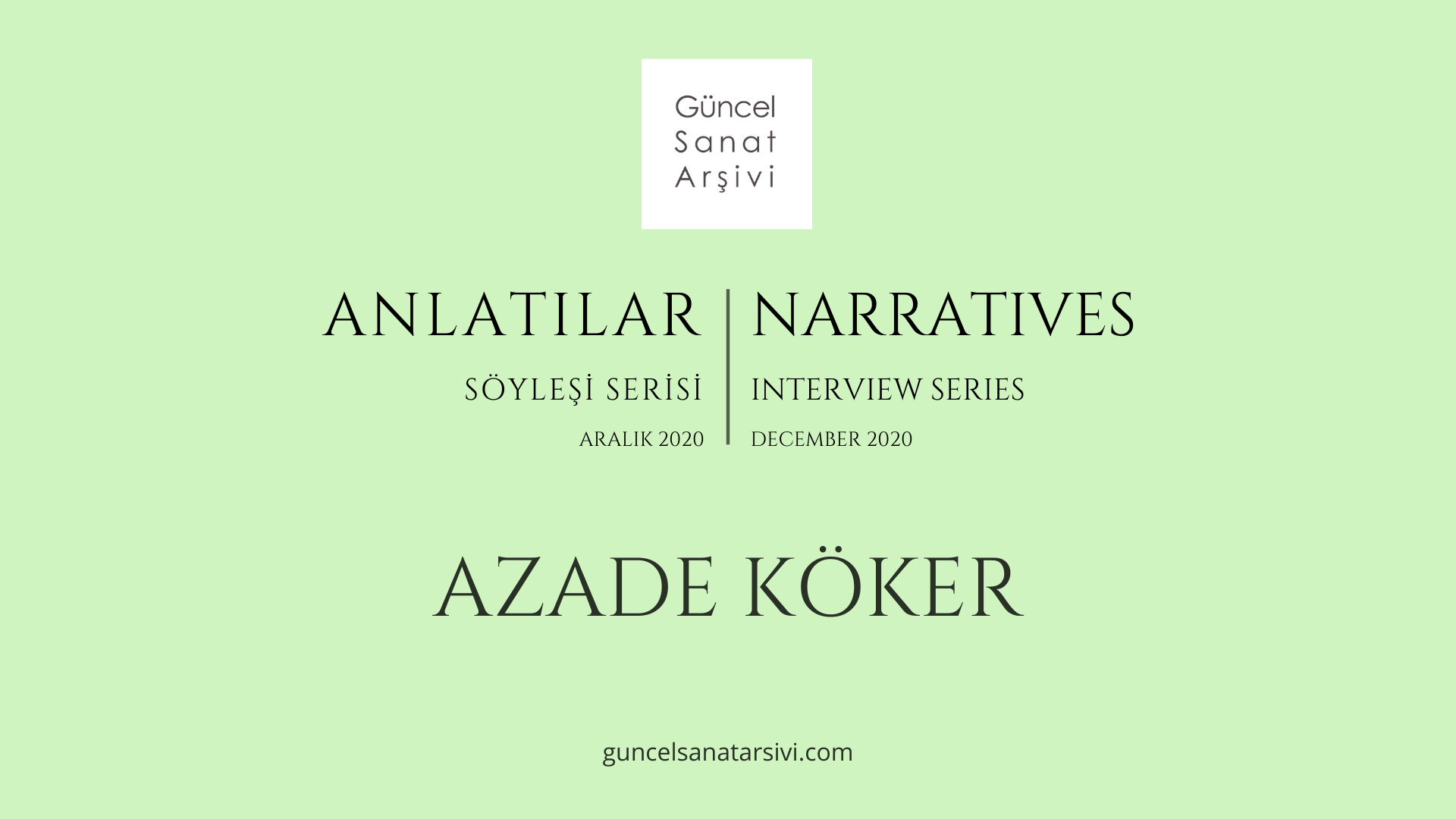Interview: Seniha Ünay / About
Translation: Burçin Nilay Kalınbayrak / About
The guest of the December issue of Narratives Interview Series is Azade Köker, an artist who maintains producing art on both national and international scale. The interview focuses on Köker’s art production in terms of subject, material, and process. It also reveals her perspective and predictions about sculpture, nature, and cities.
“One of the powers of art is not to escape the truth, to show it, to present another world even for a short time like the rays of the sun through the green palm leaves on a winter day.”
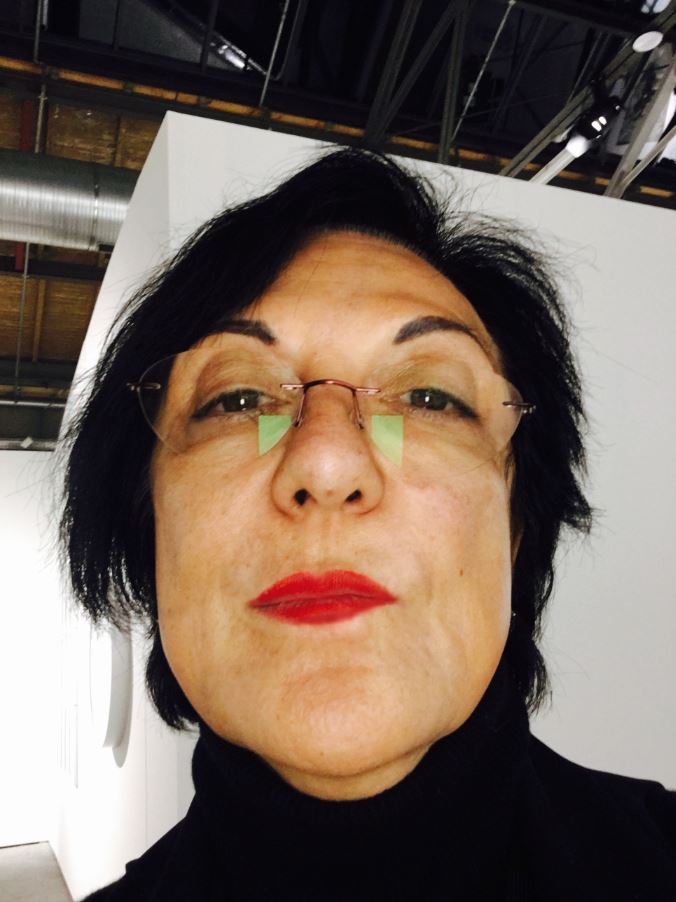
In your artworks, you are addressing critical issues such as identity, belonging, nature, city, war, and migration. Could you tell us how you determine and treat your subjects?
We entered a century as heavy as lead. This heaviness put everyone under pressure. No matter who, everyone got trapped under this weight consciously or unconsciously. As if we are living in the coal cellars of houses that survived the earthquake. One of the powers of art is not to escape the truth, to show it, to present another world even for a short time like the rays of the sun through the green palm leaves on a winter day. There is not any tattling complaint in the narration of this world; this is the power of art, it shakes us a little and we wake up to ourselves. In other words, we leave, for a while, the small worlds covered with simple daily ambitions and rush, and we feel the full depth of being human. What this century has brought and will bring becomes integrated within ourselves, and with this encountering, we enter into another act of acquiring knowledge.
Issues like identity, belonging, nature, city, war, and migration are not separate from but interdependent to each other. This is a structural phenomenon, a formation that takes shape by progressing as layers. This formation will either heal itself or disappear over time. Now we are in contemporary but reading it like history. My works, either collages or sculptures, transform this stratification into a form. I have no intention of informing or provoking anyone. In and with this stratification, I am just like a viewer examining the formations.
Azade Köker, “Invasion 5“, Multi material paper collage, 50×70 cm, 2018.
“It is important to tell the most with the least in sculptures. As I do not like verbosity, I want the forms to combine plainly and in order of priorities.”
In your works like “Abandoned City”, “Invasion 4”, and “Invasion 5”, you address the issues such as war and migration that most of us have experienced or witnessed. In these works, you use translucent paper, a fragile, transparent or even temporary material. Frankly, with the contrast between the heaviness of the subject and the lightness of the material, the subject permeates us like a tragic, deep chasm. Could you talk about the language of the material in your works? How do your materials correlate with your issues?
When it comes to the sculptor, heavy material comes to mind.
The sculpture is often thought of as carrying a heavy load. The stereotype of a sculptor is a strong man who works with stone, wood or metal. On the contrary, I’m looking for materials as light as possible that I can carry by myself.
How a syllable in Ece Ayhan’s poem shakes people, how a sentence in Fernando Pessoa’s essays falls with all its weight, and how we get shocked in the mind; this is also possible in visual arts with unusual light materials.
Light materials put up resistance as well. It requires experience to give form to them, to understand their language, and to become integrated with them.
Besides, it is important to tell the most with the least in sculptures. As I do not like verbosity, I want the forms to combine plainly and in order of priorities.
What excited me the most about making sculptures was working with the material. It was fun to experience all the elements; air, water, fire, and natural earth in my works with ceramic materials and technics. Sculpture is a massive three-dimensional expression and an art branch that exists in a space, and compels, and even defines it. In my recent works, in the collages, I also work with water and air. It can be said that the combination of some materials such as paper and photography is actually an extension of my works as a sculptor.
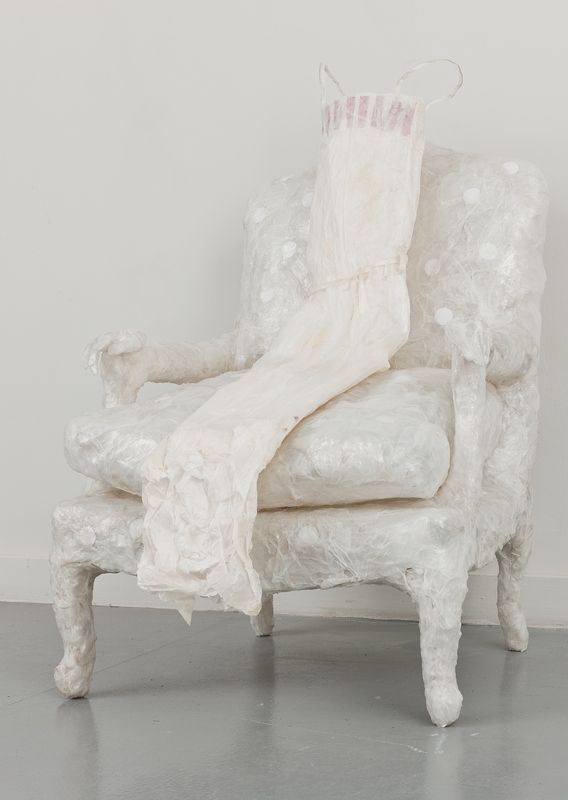
Azade Köker, “Spheres”, Paper Sculpture, 120x100x120cm, 2012.
In 1972, you went to Berlin for education after you graduated from the Istanbul State Academy of Fine Arts. Since then, you have been living and working in Istanbul and Berlin. In some of your works, you focus on cities such as Aleppo, Mardin, and Beirut, which have deep historical, political, cultural, and social memories like Istanbul and Berlin. In this context, could you mention your view of the cities you have lived and treated as a subject in your works and their place in your art?
Usually, the neighboring countries, especially the Middle East countries were not preferred travel routes for Turkey for a long time. For example, I have many friends who complain that they could not see Aleppo where a part of the city is destroyed now. But it’s too late now; the old city is razed.
During these trips, I saw family structures, the expression of class differences, different expressions of the Islamic religion, and aesthetic concepts in urbanization and daily life. I gained insight even if just a bit. The land invasion in Beirut after the war and unplanned urbanization may also happen in Aleppo. A group that opposes the erasure of the city’s history and experience, and wants a say in the decisions made to change these public spaces, objects to the political support of capital rent in Beirut. For example, they are opposed to the demolition of a cinema building called “The Egg” of which the construction started in the 60s by the architect Joseph Philippe Karam. Even today, this structure in Beirut, which resisted the huge explosion in August 2020, still impresses me. Now, meetings and cultural studies are held in this building.
Traveling means interaction. The similarities and the differences in the eating customs between Israel and other Arab countries and us are very attractive.

Azade Köker, “Aleppo II“, Mixed media on canvas, 130×400 cm, Diptych, 2016.
“We are entering an era of never-ending repair…”
In some of your works that you present sequences from nature, we see a visual as if it was built with layers overlapping in the whole work. In the details, on the other hand, we see images you inserted that shakes our perception of nature. For example, the tank images in a forest landscape in your work “The Tanks in the Forest”, two of the famous figures in Edouard Manet’s “The Luncheon on the Grass” in your work “Picnic”, and the skulls apparently seen in your work “Grass”. Could you touch on the relation between the part and the whole in your works and the way you address nature?
What is meant in collages is not only the natural landscape of course. Here, the forest acts as an Espace that bears the burden. Expressions in the forest try to explain the diseased situation of our age. The orthopedic condition of “Time”… We are entering an era of never-ending repair. The wildness within us, the transformation of cities into the denture, the fact that nature is experiencing an irreversible collapse… The coming ages will pass with the repair. With Corona, this collapse accelerated. This is a disintegration.
I think that the bed of roses ideal by the developed countries is no longer possible. This is not such a negative thing. On the contrary, it is about the idea of being humble. People have now seen that everything is one, that if one’s hunger benefits the other’s satiety, it cannot continue like this. My last works which can be seen at the “Unlock” exhibition opened on December 15, 2020, at Zilberman Gallery, try to explain the diseased situation of our age.
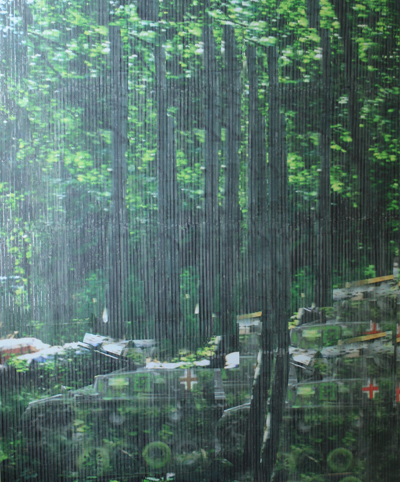
Azade Köker, “Tanks in the Forest “, Mixed media on panel, 253x213cm, 2011.
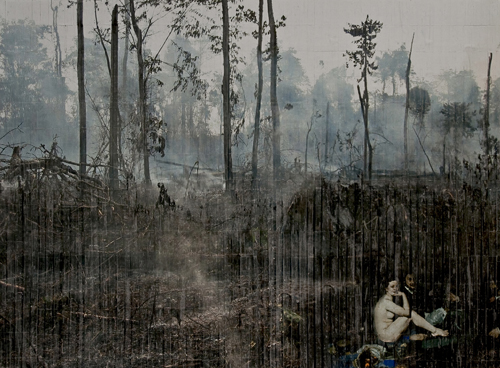
Azade Köker, “Picnic”, Mixed Media on Canvas, 104X150cm, 2011.
In your solo exhibition “Everywhere, Nowhere” in 2016, it is said that you believe the political borders that are tried to be protected by wars will lose their meaning in the face of natural disasters. In the exhibition, the surfaces covered by vast trees almost strengthen the sense of eternal nature and infinity. How do you evaluate the conditions we are experiencing today, four years after this exhibition?
There were hundreds of human figures in this work. These figures were a reference to the present. See, the movement of the masses, people pushing the borders, and the refugee influx, in which there is no solution and which the Western countries will experience more intensely in the future. In the face of this influx, European values brought by the Enlightenment may come into question.
According to World Environment Organization 2016 Report, if humanity continues to live like this, two earth-like planets will be needed in 14 years, not so far.
This research also points out that the earth’s resources are consumed double in one year. Here, it is tried to be explained that the resources of agricultural lands on one hand and waste production on the other exceed the current world resource capacity.
Christopf Heinrich states that humanity is in a life-threatening attitude and this should change as soon as possible. He highlights that the concepts of “success and prosperity” should change by merging with the definitions of environment and society through reconsideration.
Numbers indicate how rapidly the agricultural and forestry lands and animal species on land and sea decreased as a result of such resource robbery.
In my recent works, I have tried to express the return of pre-modern world politics. I have produced works as a harbinger of a collapse.
Now, a question in mind:
Was postmodern understanding of society, a postmodern attitude that everyone would be side by side, that contradictions would be regarded as positive developments, that centralism would disappear, and that differences would be seen as a chance a dream?
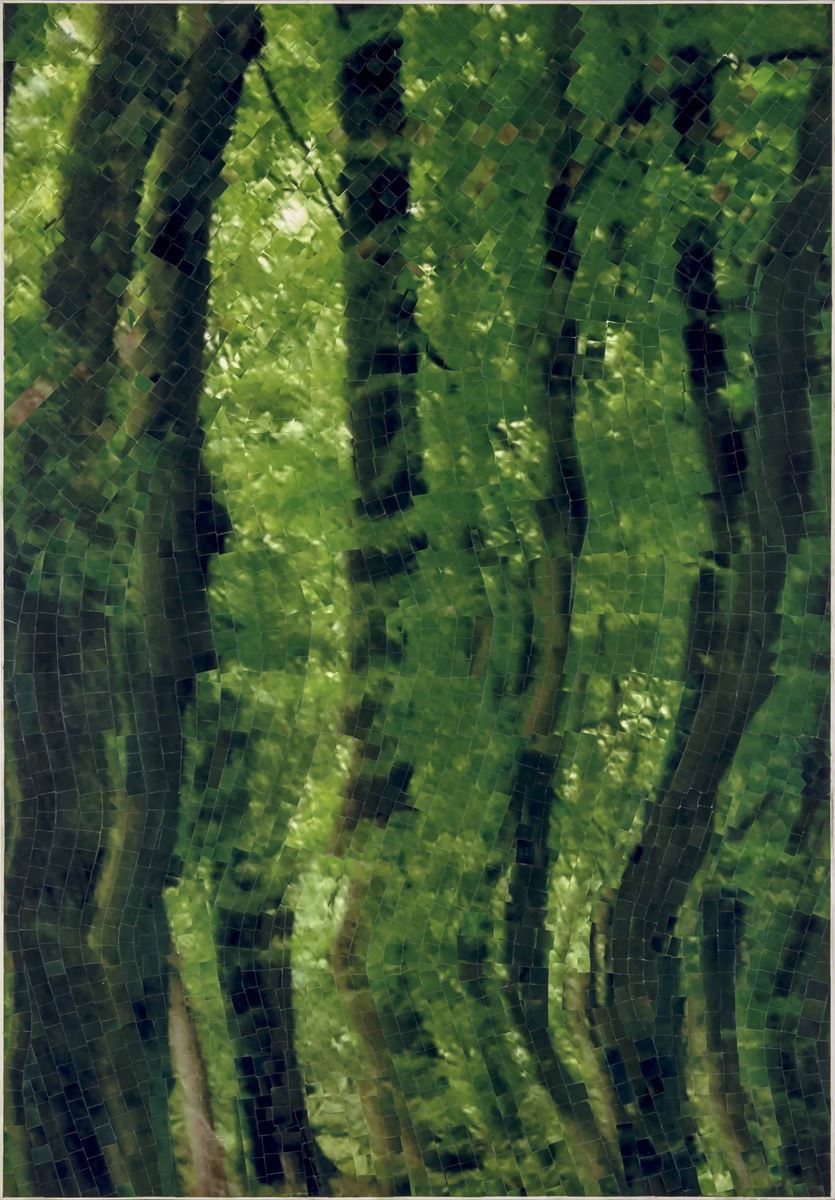
Azade Köker, “Fragiler Wald II”, Mixed media on canvas, 200×140 cm, 2017.
Our thanks are due to Azade Köker, and Zilberman Gallery for the photos.
- For more information about Azade Köker, you may visit her website.
- The photos in this interview are used by courtesy of Zilberman Gallery and the artist. Photos by Kayhan Kaygusuz.
- The rights of all the visual and textual concepts in this interview are reserved. Quotation shall be allowed provided that the source shall be mentioned in the work where the quotation is cited. For the photos please contact Zilberman Gallery and the artist.
Please click for more information about Narratives Interview Series.
